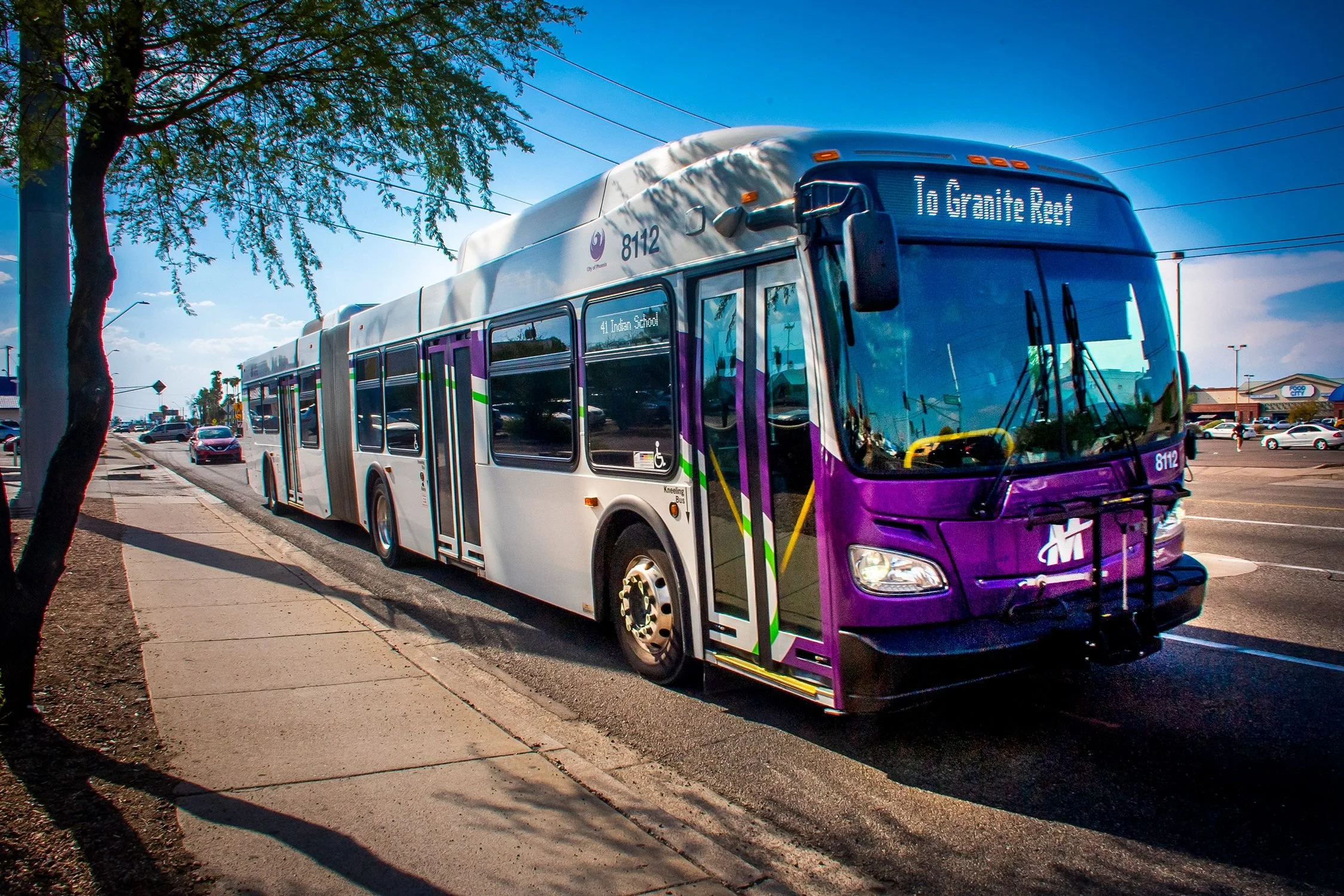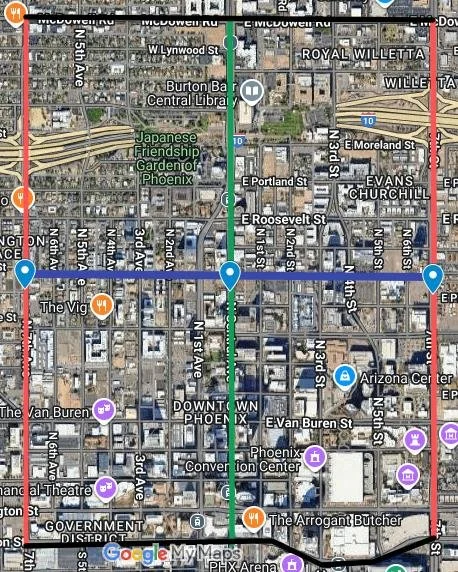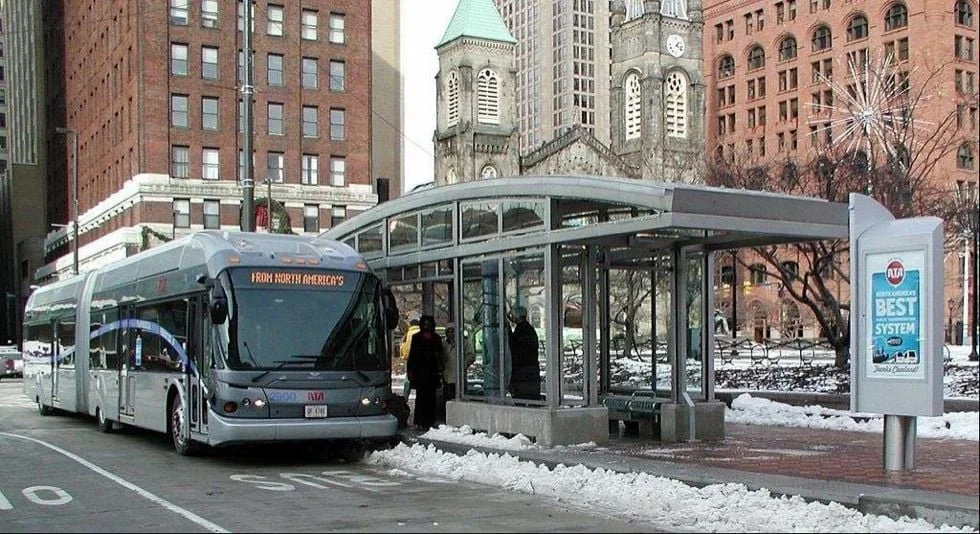The Neglected 7s of Phoenix: Transit Upgrades to Build a Real City
In 2017, the Philadelphia Inquirer’s website reported on Phoenix passing Philadelphia in population, but in typical East Coast fashion, they threw in a dig that cuts to the core.
The general sentiment of the insult? It’s OK that Philly fell from 5th to 6th in population for American cities because at least Philadelphia was (and is) a “real city”.
Ouch.
But even the staunchest urbanists in Phoenix have to admit that we have some catching up to do here. In 2017, not long after the Inquirer’s hurtful one-liner stung the Valley, Brenna Goth of The Republic/azcentral.com examined the issue at hand: Is this place we love and call home a true city?
Goth writes that people associate big cities with skyscrapers, trains, and interesting street-level activity. People don’t just judge cities by their overall population; they also look at urban intensity or urbanicity. Basically, does the place really feel like a city? Is it walkable? Can I take transit to where I need to go? Is there a distinct character?
Regardless of how you define a city, one thing that can’t be ignored is that Phoenix lacks a cohesive urban core that rivals cities like Philadelphia, Boston, Chicago, or Seattle. Have we continued to improve in this area? A resounding yes. Are we there yet? A resounding no. There is much work to do.
Central, The 7s, and 3 Key Phoenix Neighborhoods
As a polycentric region, the Phoenix metropolitan area can sometimes have its core defined inconsistently. What most can agree on is that Downtown Phoenix, Midtown Phoenix, and North-Central Phoenix (or Uptown) revolve around Central Avenue (which runs north-south) with boundaries roughly around “the 7s”, 7th Street to the east and 7th Avenue to the west. This can certainly be fluid as neighborhood boundaries aren’t always an exact science. Yet, a sizable portion of the development community and many residents would cite the 7s as the eastern and western boundaries of Phoenix proper’s urban core. This area powers not only the city of Phoenix itself, but its economic and cultural impacts are felt across the entire Valley.
Entertainment venues. Museums. High-rise offices, hotels, and apartment buildings. Forget Scottsdale. And sure, Tempe is growing up just fine. But take a walk north on Central between downtown and midtown and you quickly see this is the place where Phoenix is in its most urban form.
It wasn’t always this way. Speaking to people who have been in the Valley for decades, downtown’s transformation has been described to me as something you could only believe if you saw it happen yourself. A classmate of mine at ASU described Downtown Phoenix at the turn of the century as a place you only went for work. A depressing place, completely dead outside of some 9-5 activity between Monday and Friday. Some may remember it in a gentler light, but the general sentiment is that the area has objectively changed in a radical way over the past quarter-century.
Now, when you take that stroll down Central Avenue, you see a “real city”.
Part of the urban vibe in the area has been augmented by the light rail, which opened in the late 2000s. Regarding the urban core, it runs north-south between Downtown and Uptown along Central, between Jefferson and Camelback. This portion of Central Avenue has the city’s most intense land use in the form of commercial and residential high-rise development.
But what about the 7s? Take a look.
This satellite view of downtown shows Central Avenue in green, the 7s in red, and McDowell and Jefferson bounding the areas’ rough northern and southern boundaries (shown in black). The walk between the markers (from Central to 7th St to the east and Central to 7th Ave to the west) is 15 minutes a piece. And it’s a 1-mile, 30-minute walk between the 7s themselves.
Central Avenue has been activated. It has sufficient transit and relatively intense land use.
However, the 7s have NOT been activated despite the following:
They can serve as a gateway to a cohesive urban core.
They can help form a more cohesive urban core.
They are adjacent to neighborhoods that many view as attractive urban destinations such as Grand Avenue straddling the western edge of downtown or Coronado to the northeast.
There are a plethora of small businesses that many urban dwellers, tourists, and suburbanites alike enjoy frequenting.
And the main point here is that both of those corridors, 7th Avenue and 7th Street, should be fully activated in a metro area that is home to approximately 5 million people. They should have their own form of high-capacity transit that runs between North-Central and Downtown. Or even North Phoenix and Downtown (South Phoenix has just recently been connected via light rail along Central, and transit upgrades to the 7s should be evaluated in the ensuing years).
What would this do?
This would effectively help the synergistic dynamic behind land use and transit in a positive way. You’ll notice in the picture above, in the southwest quadrant, there are some underutilized parcels clearly seen even from a satellite view on Google Maps. Development there has picked up in recent years, namely in the form of multifamily development projects. To encourage further higher-intensity development, high-capacity transit should be used to its fullest extent.
Let’s say you live on 6th Avenue in an apartment in that southwest quadrant. You are car-lite or maybe even car-free and you want to go to Encanto Park. Why should you have to go to Central to catch the light rail, if you could catch a bus or train on the adjacent 7th Avenue instead? By activating more corridors, opportunities for transportation access and mobility are endless. Great cities don’t inconvenience walkers, bikers, or transit riders all in the name of people in individual automobiles. They allow you freedom to go where you want, when you want, without needing to own a car.
In principle, enhancing transit services could allow residents of North-Central (Uptown), Midtown, and Downtown to experience each other’s neighborhoods without having to drive (or having to drive less), lowering the cost developers incur on new developments. A cost so burdensome it can kill projects. And there you have it- a great step in extending and amplifying the footprint of Phoenix’s urban core, infusing (even more) life into already vibrant neighborhoods close to Downtown.
What is Broken?
As one might expect, there currently IS bus service for both of these arterials: Route 7 and Route 8 for 7th Street and 7th Avenue, respectively.
The problem is that both of these lines are woefully inadequate. Whether it’s their planned headways (time between buses) or the actual headways riders experience, such core urban arterials need more frequent service.
Let’s start with 7th Street, where things don’t look so bleak at first glance. 15-minute headways are promised in the core that we’ve been discussing (as well as South Phoenix). The issue, as alluded to above, is that these buses are nearly never on time.
Take it from a former Phoenix resident who liked taking Route 16 to their favorite pub. Headways of 30 minutes are promised at nighttime in Valley Metro documentation. Guess who, on multiple occasions, had to wait close to an hour to get on board to go get dinner and meet friends?
I’ll give you a clue: it’s the guy angrily typing this article.
If I weren’t a transit enthusiast, I could have hopped in my car and been at my destination in less than 10 minutes. That’s probably why almost every time I board a bus in the Valley, I can count the number of passengers on one hand. People do what is efficient for them. Not everyone is going to have the patience I did with Route 16. Not everyone loves transit. Most people just need to get to where they need to go, and don’t have time (or patience) for endless delays.
As for 7th Avenue? Route 8 serves it, but 30 minutes is the quickest headway promised at any time of day. Even at the promised headway, that is just absurdly slow.
How Can We Fix It?
So, what’s the alternative?
Bus Rapid Transit, also known as BRT, is a fantastic opportunity for arterials that deserve some love.
BRT is an efficient, comfortable, and cost-effective type of public transportation that moves a lot of passengers faster than normal bus service. BRT has features that are similar to light rail, but instead of trains, buses are used. Features can include dedicated lanes that get priority at traffic lights, prominent stations with additional amenities (Wi-Fi, improved shade/shelter, lighting, bike racks, etc.), and off-board fare collection at the bus stop (think of how the light rail has you validate your pass BEFORE stepping onto the train).
In their quest to improve public transit access in the city, Phoenix is already working on placing its first BRT line, up-and-down 35th Avenue on the city’s west side.
Now let’s compare the current headways on the 7s to a BRT system in another much smaller US city: Cleveland, Ohio.
Cleveland’s Healthline BRT line (photo by National Association of City Transportation Officials)
Cleveland’s “Healthline”, is a BRT route that follows Euclid Avenue, one of the most important corridors in the city. The route connects two vital activity centers in Cleveland- Downtown and University Circle (home of health and cultural institutions galore).
Headways along the Healthline? 5-8 minutes during peak hours, 10-15 minutes off-peak. It’s worth mentioning that as a former Cleveland resident, I can attest to this particular route being much more reliable than any bus (or train) I have taken in Phoenix.
All of this to say, at its peak, a Healthline bus in Cleveland can arrive SIX TIMES more frequently than 7th Avenue’s bus service can (5 min vs. 30 min headways).
Oh, and by the way, the city of Cleveland has less people than the city of Mesa. Yes, the same Mesa that is considered a suburb of Phoenix.
When people say Phoenix isn’t a real city, this is what they mean. Let’s make a change. Let’s prove them wrong.
A Sleeping Giant
It’s time we learn from our mistakes in this region. Build from the inside out and not the outside in.
Densify our core and watch it spill over (to the region’s benefit).
Just imagine the Phoenix we already know and love with a core that rivals some of the more established US cities.
That’s a tall ask. Lots of these places have been developing for much longer than Phoenix has. But everything starts with one small step. This is that small step.
Activate the 7s and unleash a sleeping giant: a real city.



